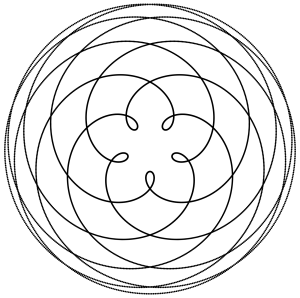Recognition is, Paul Ricouer observes in Memory, History and Forgetting, a small miracle. What could it have been–what is it–to participate in the drama of recognition? We recognize something we have ‘seen’ somewhere before; the mystery of it somehow persists in (his beautifully named) ‘the treasury of forgetting’ and out of this arises an image, or trace, that bears faithful resemblance to what once I saw, heard, felt, learned, acquired.
When I visited Kannon-sama the other day, as strange as her beauty is to me, there is something recognisable about her; something perhaps archetypal. The uncanny, unheimlich, approaches (after years, perhaps?) heimlich, a state in which there is some familiarity. I know the temple; I have my bearings; I feel at ease (more or less); I’ve seen her quite a few times in various guises. I recognise her, despite her distance from my native cultural repertoire.
What was it that the shepherds and the Magi saw in the Jesus child that opened in their souls, irresistably, the impulse to worship and adore? Isn’t it amazing that we know this feeling by way of recognition; even while the Parousia is quite beyond our ken?
I also think it is amazing that we somehow remember stardust. That we are, in our life-forms, remembrances of it. I liked Pope Francis’ Angelus message on the day of Epiphany. He reminded us that
“The shepherds and the Magi teach us that to find Jesus we must know how to look up to the heavens, and not to be turned in upon ourselves, on our own selfishness,” he said. We must rather “open our hearts and minds to God, Who always surprises us, know how to welcome His messages, and respond promptly and generously,” he added.
The experience of the Magi “urges us not to be content with mediocrity, not to just ‘get along,’” Francis said, “but to search for the meaning of things, gazing with passion into the great mystery of life.”
Oriens, in Latin, is anatole in Greek. Both mean the rising, appearing or originating of the sun and stars. Living in the so-called Land of the Rising Sun (Nippon = the first two rays), I’m quite sensitive to the associations with stars rising! Odd, because it totally depends where you read from, so the translation ‘east’ doesn’t really work . . . not for all places, at all times, anyway. To say, though, that they were ‘of the Orient’ is a metaphor full of promise and wonder. The Magi, ‘from the east’, were strangers and outsiders in relation to the Jewish people they found themselves among and yet the star was a sign that they recognised and responded to (in spite of their foreignness).
I suspect the Magi and the Shepherds were, after their own fashions, poets. Poets always know where the light rises and how the Word becomes flesh.

The Rose of Venus is also called the Venus Pentagram. Venus is sometimes the morning star and sometimes the evening star. I’ve never seen one of these before and I think it’s beautiful. More here.